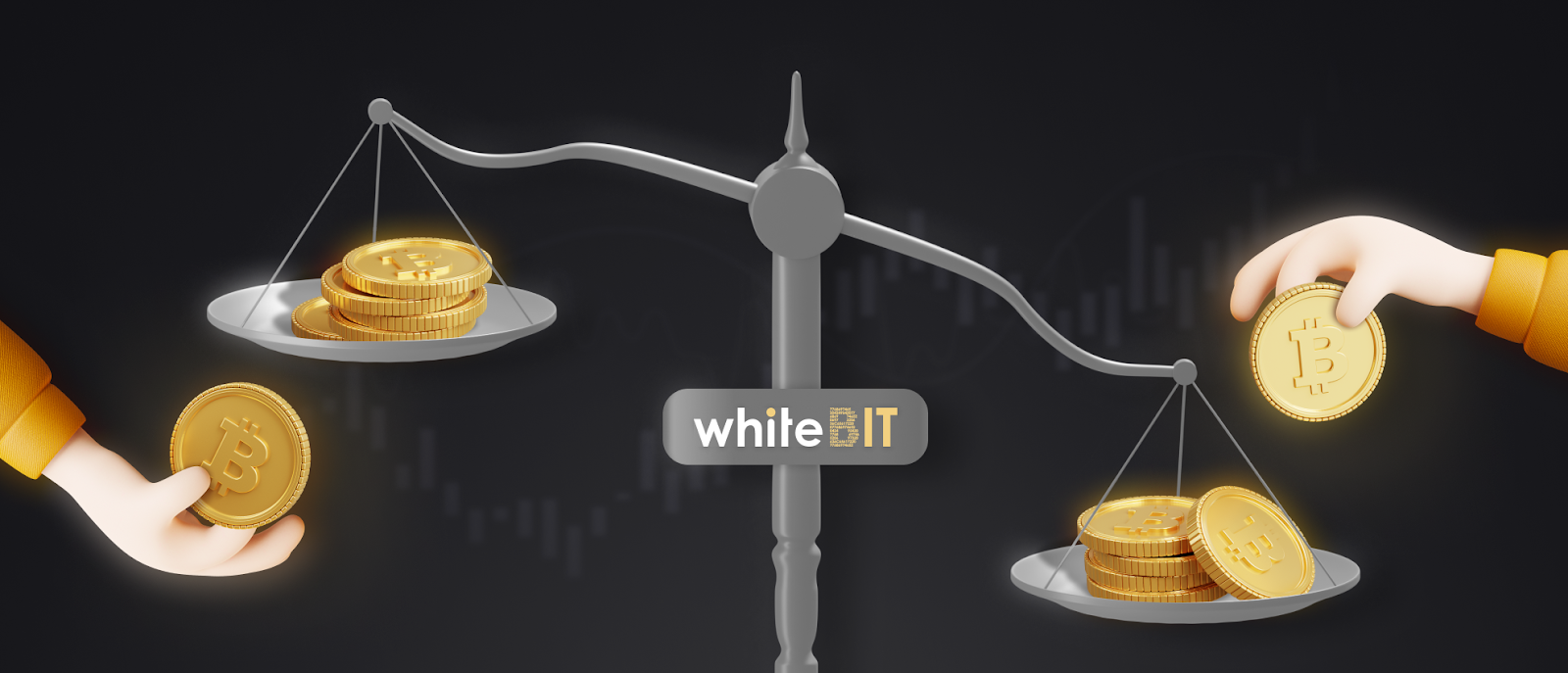Starting off in trading can be challenging. But as soon as you master the basics of the buy or sell principle, there will most likely appear a need to level up your mastery. The world of crypto attracts novice and professional traders with its rich abundance of trading opportunities. Besides regular orders that help control price fluctuations, there are tools that enable traders to involve additional capital and earn more profit. These tools are futures and margin trading. Let’s review the functionality of margin and futures trading available on the largest European cryptocurrency exchange, WhiteBIT.
Why WhiteBIT?
WhiteBIT is a centralized cryptocurrency exchange that has been conquering the market since 2018. The company offers a number of useful orders that users can trade crypto with, custom trading tools, and the lowest trading fees on the market. There are 450+ trading pairs with over 200 digital assets and more than 30 national currencies. The platform is designed not only for purchasing cryptocurrency but also for receiving passive income.
WhiteBIT is permanently among the Top 3 safest crypto exchanges in the world, according to the cer.live ranking, with over 96% of its assets being stored on cold wallets. Cold wallets are the most secure way to store cryptocurrency. Moreover, users can enjoy additional protection options in the form of 2FA, WAF systems, and anti-phishing.
The platform allows receiving crypto not only in a conventional way. There are regular trading competitions, entertaining activities on social networks, and large-scale collaborations with other big-name projects like a leading gaming platform, FACEIT.
As for tools for professional trading, the company offers margin trading with up to 20x leverage. Recently, it widened the PRO Trading section with futures trading too.
Margin trading on WhiteBIT
Margin trading is considered a tool for experienced traders who can properly evaluate the risks and manage the trade. The principle of margin trading lies in using borrowed funds; in our case, these are the exchange funds. Users who want to trade cryptocurrencies within bigger deals and receive bigger profits borrow the capital from the exchange with an amount they can invest (margin). Here comes the leverage, the ratio of the loan to the margin. If you want to open a deal for $500 with only $100 in your pocket, you can use the 5:1 leverage, meaning you will invest your $100 in a deal, and the rest of the needed amount will be credited to you from the exchange. You will receive all profit from the deal but pay the fee for using the borrowed funds and the trading fee. In case of loss, the funds will be credited from your personal funds.
There are two types of margin trading, isolated and cross-margin trading. Cross-margin trading presupposes using one account for all margin funds, general margin level, and margin call and liquidation affecting all assets. WhiteBIT allows making deals with up to 20x leverage.
Futures trading on WhiteBIT
Futures trading is prevalent among experienced traders. Classical futures contracts allow making predictions about the future prices of assets, managing risks, and increasing profits multiple times. WhiteBIT offers to trade perpetual futures contracts on Bitcoin, meaning they don’t have an end date. The crucial part of perpetual futures contracts is the funding system. It means traders pay each other settlements depending on their open position. Funding takes place every 8 hours. The first perpetual contract of the platform is USDT(S)-M. Let’s decode: the settlement is carried out in USDT, and “M” means there is a possibility for leverage.
Futures and margin trading compared
The main difference between futures and margin trading lies in the fact that there are two different markets for each kind of trading. Margin trading takes place on the spot market, while futures trading is carried out on the derivatives market. Also, trading futures contracts presupposes concluding a deal in the future, even if you trade perpetual contracts. In this situation, market participants consider the future price of an asset, so they rely on the analysis of the market and their predictions. In contrast, trading with leverage is usually about making a deal in the present but with more capital involved.
